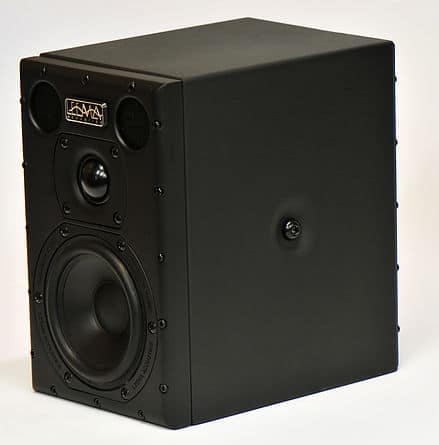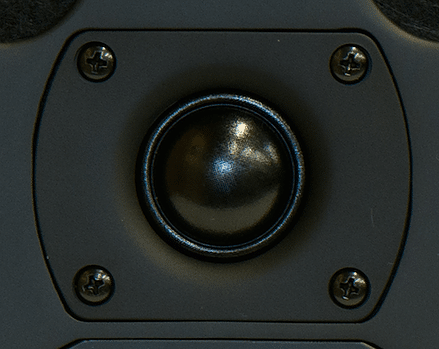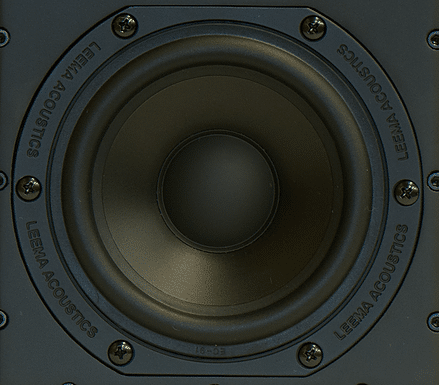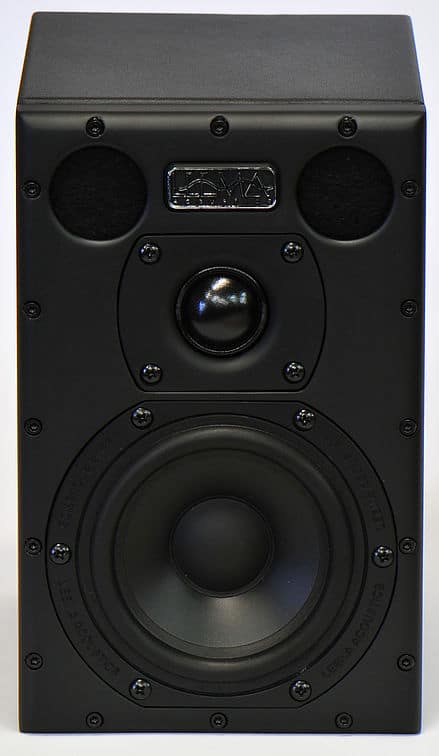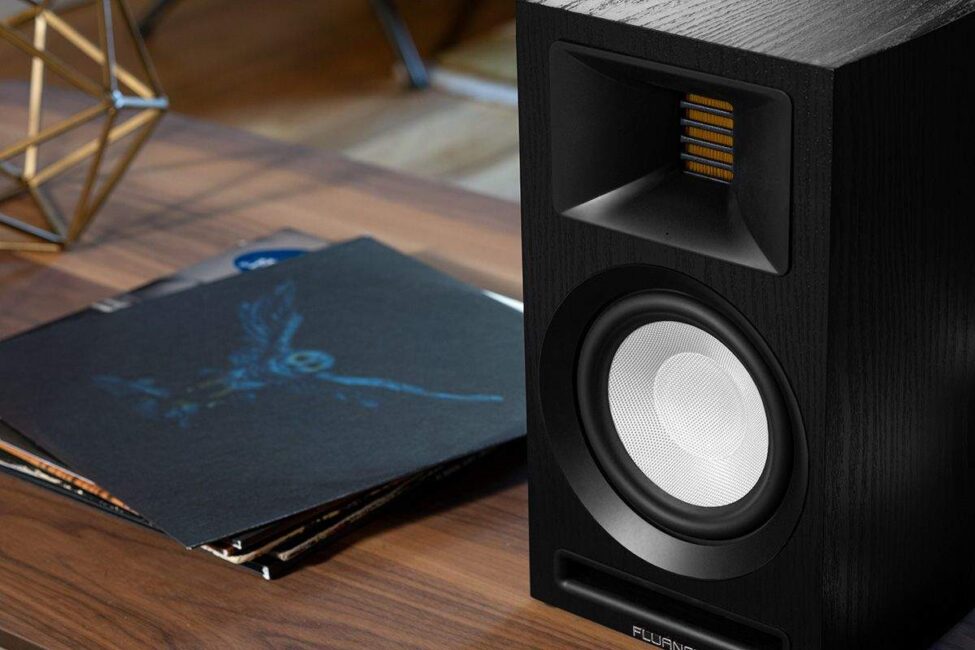The Article
Xen And The Art Of Leema
2nd March 2016
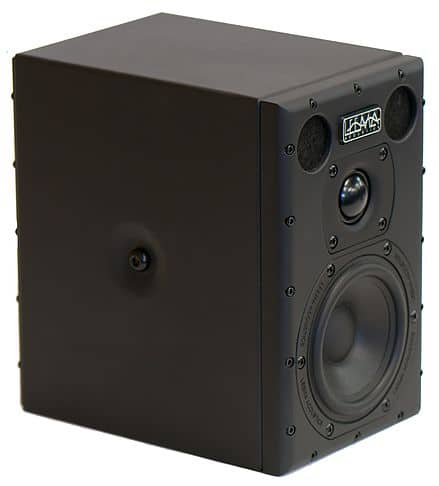
Returning to the company’s roots, Leema has reintroduced the speaker that started it all, the Xen. Paul Rigby gets all nostalgic
How old are you? I don’t mean to be rude but the older you are, the more life experiences you will have passed through. Chances are that you will have also have undergone some changes and evolution in how you look, the family that surrounds you or doesn’t, the place you live, your philosophies on life and more. In short, you will be a different person. Having journeyed down this, hopefully, successful path, can you look back and single out one thing that started it all? Maybe a chance meeting? A job? Visiting a particular place? Is there something or someone that you got where you are now?
Some people can’t answer that. Leema can. It’s called the Xen.“Both Mallory (Mallory Nicholls, being the co-founder: the ‘ma’ bit in the brand name, ‘Leema’) and I were early adopters of surround sound back in the 80s. We both worked in TV and feature films for the BBC. I was a recording engineer back then. We both wanted a system that would have been 5.1 but that was quite unusual at the time. Home cinemas didn’t really exist back then, so I needed to make small speakers of high quality. Like most people, my missus don’t want me to have five coffins in the living room. It became a quest to see what we could do in a five litre box,” said Lee Taylor (the ‘Lee’ part of the ‘Leema’ brand name).
The pair concluded that they would create a Grade 2 BBC monitor compliant design. That means it’s a normal, high quality monitor plus and minus 2db. That window also includes restricted bass response, “What we wanted to do was to make a replacement LS3/5A for the modern age – rather pompously,” added Taylor.
Having grown up with LS3/5As at the BBC, Taylor was not exactly complimentary about the ‘classic’ speaker. I’ll just go and take cover behind this sofa I’ve got by my computer here, while he says the next bit. I’ll be back soon. Let me know when he’s finished. Over to you Lee.
“I’m going to say something that’s horrendously contentious. I know that the LS3/5A has a tremendous following but, for the most part, it’s a crap speaker. Sorry. Most early examples are 79db per watt efficient and their mass/power handling is 30W. They don’t go very loud. They are near-field monitors – when I say near-field I mean three feet – to be used practically as headphones. They work very well for that. They were designed for outside broadcast trucks and voice studios, plugged into walls. The bass response was augmented because they were bolted to a wall. A terribly polite speaker that are excellent for voice but not for general monitoring. You’d used a Grade 1 monitor for that and the LS3/5A is a Grade 2 monitor. So you weren’t supposed to use the latter for orchestral balance, for example.”
Just a second, let me clear away the rotten fruit here. In that LS3/5A mode then, the Xen offers a pretty flat response, a highly damped, thin-wall cabinet, “That’s a thing that Spendor and Harbeth have carried on. If you put our Xen next to a LS3/5A, though, the latter looks enormous! For our Xen,” said Taylor, “the problem was to find a bass unit that would produce any bass at all for a box of that size. At the time, we found a SEAS driver (that was magnetically screened) that worked. We used it for a long time but it was withdrawn. This was around 1998.”
When the guys initially made the Xens, they only made around 10 pairs for themselves. Then they would have people like Editors approaching them asking for a set because they were handy as mobile/luggable kit, as they moved around a lot from studio to studio, “We gradually produced more and then formed Leema,” said Taylor. “That’s how Leema got off the ground. I have personally made 1,000 pairs of them. I still have Mk.I Xens in my home surround system at home.”
If you look at a small, five litre box, the thickness of the walls makes a huge difference to the perceived size of the unit. Instead of using 15-18mm MDF walls Leema used 1.6mm steel, lined with bitumen. This makes a huge difference to the size, “If you look at our Xero speakers,” said Taylor, “the Xero is essentially a Xen in a wooden box but the Xero looks much larger because of the thick wood. Steel has another series of properties such as rigidity. It works well with the bitumen.”
Actually, those walls produced a lucky design accident, “Most 4” drive units have a peak around 1kHz. It’s a function of the size but the dimensions of the Xen means that the sides resonate very slightly at that frequency. You’d normally try to avoid that but, in this case, it helps the driver to lose energy at that frequency. It smoothed out the frequency response. Spenders and some Harbeths are much the same.”
The company stopped making the original Xen speakers in 2008 because of increasing costs and decreasing profits. One issue was that the speakers were so expensive to build, featuring 212 components, “Each pair takes around five hours to make. Most companies bang out a typical pair of speakers in an hour or so. With the Xens, there were so many screws!”
Another reason for the number of components is because the front of the speaker is made from MDF and it has to be air tight so you have to allow for any movement in the MDF. You need that many screws to prevent air leaks. Granted, this is an old design, “Now, I would do it in a completely different way but, back, then that’s how it was created. You cannot have an air gap in a Xen, it affects the bass profoundly,” said
Taylor.The new version of the Xen, the Xen 2, is the same but made in China. Lower labour costs have made the Xens profitable again. Are there differences between the original models and these new versions? “Well, SEAS stopped making the 4” drive unit so we had to replace that. We had to have a custom-made driver unit to match the parameters as close as possible to the original. The silk domed, ferro-fluid loaded, tweeter is exactly the same. The mid/bass unit is the same paper/polypropylene construction (fibreglass cones were quacky, carbon fibre were lifeless) mix that uses the same off-set spider (The spider controls the cone at its extremities. It’s like a spring). Conventionally, the spider is almost on top of the magnet, it’s quite low down here. This one is more towards the top of the voice coil.”
So why has the Xen been relaunched at all? Blame the Germans. It was Leema’s German distributor who put in a request because the demand remained high.
WALK AROUND
So, let’s take a closer look at the construction of the Xen 2.
The front ports are quite long, 260mm. Much longer than you might think, actually. The cabinets are tuned to 57Hz, which is quite a challenge. Then there’s the front-mounted ports which allow the units to be bolted to the wall, “Most hi-fi people ignore a crucial aspect of the included ports, especially in a monitor speaker,” said Taylor. “That is, the velocity of air in the port must not exceed 0.1 of the speed of sound, otherwise you get noise and port compression which means that the air can’t move fast enough, which ends up restricting the movement of the cone.”
As for the port covering? The cylinder of air in a port, when it gets close to 0.1 of the speed of sound or if the cone is pushing out a large amount of air, can produce a rapid column of air. At the interface of the port to the outside air, you can get something called Port Hammer. The column of air is a solid. The front, hitting the outside world makes a sound of its own. This effect is also called crepitation. Hence, the fitted material helps to break up the wave front and reduce port noise. But that’s not all in terms of the ports on the Xen 2s, “Ported speakers used to have a bad reputation for one-note bass. That was down to a mis-aligned port, the port must be tuned very carefully to the box volume and cones. The port is a piece of plastic pipe with an elbow in the middle. It’s 10” long and there’s two of them.”
That’s enough on ports. Let’s talk sheep, “The Xen 2s includes genuine wool inside. We’ve tried other stuff but the only thing that works is sheep’s wool. It has to be in the right form: brushed with constant density. There’s also a steel bar situated right across the middle to enhance rigidity.”
That’s it, part from the bi-wiring option on the back. Now, how does it sound?
SOUND QUALITY
Starting with the vinyl version of when the Sun Comes Out from The Harold Arlen Songbook, via Ella Fitzgerald, Fitzgerald’s smooth voice can, on an average set of speakers, sound pleasant and inoffensive but not much more. If you want to hear emotion and nuance from this voice then you need speakers that add something extra and the Xen 2s certainly did that. There’s a point, during the song, when Fitzgerald sings the word “peaches”. At this point there’s distinct ‘pop’ as she moves her mouth momentarily too close to the microphone which, being a ribbon mic, takes the ‘p’ as a mini-explosion. I’m sure you’ve heard the effect before. This subtle yet important part of the delivery can be easily masked but is very easily heard via the Xens.
Another important part of this track is the soundstage. On the far left, a guitar gently strums during the early parts of the song. With the Xen 2s, the guitar takes a larger part of the soundstage and, not only that, sounds rich and full in its presence while the strings lose a lot of the ‘false’ bass that can sometimes bloom over the guitar. Instead, you hear more of the metallic strumming strings themselves.
In terms of the orchestral jazz backing, the many instruments can present a metallic wall which the ear finds it tough to penetrate. The Xen 2s separate a lot of the instruments, giving a spacious aspect to the soundstage. This allows for more tonal realism from the brass section but adds fragility to the cymbals in terms of treble performance.
Moving to The Rockets self-titled album – the outfit that would eventually back Neil Young on many albums as Crazy Horse. The brief track, If You Think, is a poppy-garage song that is given a freedom here by the Xen 2s, allowing the band to sing with a sense of abandon. The air and space allied to the highest tones within the lead vocal and accompanying harmonies add a carefree presentation that is quite delightful. At the same time, the vocal retains a raw edge that gives the song a freshness. Like a newly unwrapped piece of fruit with the dew still on it.
Running the Peter Hammill, Just Good Friends, track from The Love Songs album, it was noticeable how open the Hammill vocal was. The airy nature gave Hammill a real sense of freedom in his delivery.
Similarly, the bass was precise and sharp in its focused punch. As the speakers are tweaked towards the upper mids just a touch (in the same way that the Spendors are bathed in bass to take them down into the opposite direction) the Xen 2s sought out and registered the slight compression on this 1984 pressing, pointing out the slight hardening in the upper mids. This wasn’t so much an issue but as an attempt to achive accuracy.
Despite a touch of distortion from the drive units when pushed, rather unfairly, very hard at high volumes, in a large room, the Xen 2s were able to produce a big sound to that point which will not disappoint.
Performing tremendously well as a standard pair of speakers in a hi-fi chain I wanted to test the speakers as near-field monitors to take advantage of its design and forward firing ports. Hooking the speakers to my computer set up including a Naim CD5 CD player and Brio-R integrated amp, I played Second Layer’s ’lost’ album, World of Rubber. This was a side project from the cult indie, late-70s, early-80s band, The Sound. Specifically, Graham Bailey and Adrian Borland. So we’re looking at post punk-type vibes here with plenty of chances to punt thin upper mids and sparky treble at close quarters. What I heard was a sparse arrangement with plenty of edgy, basic synth noises and nasty guitar but done in a careful and precise manner. No brightness, no bloom, no wayward, unruly frequencies. What the Xens offered was an attractive sense of detail plus accuracy. Some near-field systems are harsh and unapproachable, the Xen 2s were the sort of speakers that you could listen to all day as monitors.
Even with the more expansive and lush sounds from McCarthy (a politco-indie, jangly guitar band from the 80s), the Xens revelled in the added bass frequencies but retained an essential poise that never felt unwieldy. Again, some near-fields only really wake up at higher volumes where the bass kicks in. The Xens offered bass from a low position in the volume scale which helped to retain an overall balance.
CONCLUSION
Dinky yet well made plus, with the steel chassis, a heavy, solid feel and heft, the Xen 2s ‘feel’ like a ‘mighty mouse’ of value, which provides plenty of positional options in terms of hi-fi and near-field applications. In terms of sound, you’ve got a pretty neutral, possibly slightly tweaked towards the upper mids presentation but that just helps the speakers to dig right into the mix and lift subtle and previously hidden detail. The overall sound quality is fresh, open, airy and detailed, giving music a clean and precise air.
They’re not classic for nothing, you know.
LEEMA XEN 2 MONITOR SPEAKERS
Price: £1,295
Website: www.leema-acoustics.com
Tel: 01938 559021
Good: transparency, midrange insight, surprisingly bassy
Bad: Can suffer slight break up at very high volumes.


